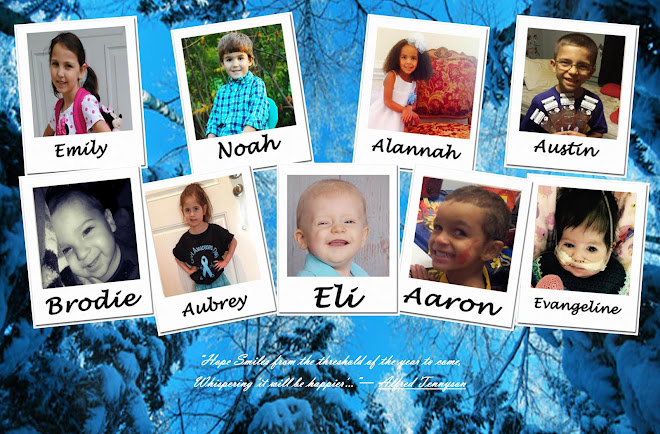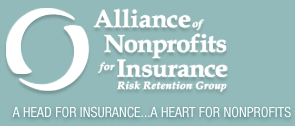Our website Congenital Diaphragmatic Hernia (CDH) Awareness - Breath of Hope, Inc has been updated. We have gone from six (6) pages to twenty-five (25) including this blog as a "Page" on the website.
In order not to duplicate information on the blog and on the website we will be streamlining this blog a little bit.
One page, Community Links, is "Soon to Come" we want to have blogs and websites from all those out there who have had children or been touched by CDH listed there. Please email us at boh@breathofhopeinc.com if you would like your blog or website listed.
We will also be offering Ad Space (subject to approval of our Board of Directors) on the site in an effort to support the website expenses, program expenses and medical research that may benefit congenital diaphragmatic hernia.
Much of the information on the website added was taken from our printed materials so it has been reviewed by doctors and staff at the University of Virginia Medical Center Children's Medical Center. We also have had many parents, other health care professionals and outsiders review our materials and we have taken their suggestions to improve our materials for all.
Steve Berry of Denver Website Design originally took the website from a Flash Website to include more. A month ago he came to us saying he wanted to help us take it to a new level of functionality. We believe he has in this latest renovation. This new site, we will be able to update ourselves and add pictures to all the scrolls of the site. We want to thank Steve for his donation in-kind for a good portion of work that was done and is still doing to work out all the backend kinks!
As always - if anyone has any suggestions, we welcome them!
Doctors, Families Rally for Cure for Deadly Birth Defect
Parent's Perspective
KSDK.com News Report of Saint Louis Children's Hospital Press Conference
Friday, July 31, 2009
Saturday, July 18, 2009
Parental Perceptions of Social Support
If you are in the Texas Area - there is a Research Study we would like to help recruit families to participate. Please contact the email addresses provided.
June 21, 2009
Dear Parents:
We know that social support is vital for parents who have a chronically or critically ill child in the Intensive Care Unit. As an undergraduate student in the honors program with a major in Psychology at Austin College, I am interested in understanding more about the types of support that are most helpful to parents when they have a child in the ICU. Currently I am working on a project for my senior thesis titled, Parental perceptions of social support: An investigation of what types and sources of social support are perceived as most helpful when a child is in the intensive care unit, where I plan to examine what different sources and types of social support parents see as being more or less helpful in coping with the stress of having a sick child. This project has been approved by the Institutional Review Board at Austin College. The purpose of this letter is to request your participation in the project.
In order to participate in this project, I need both parents involvement. In the past, much of the research has only focused on the experiences of mothers. For this project, I want to make sure to include both mothers and fathers. Your participation will involve one face-to-face interview with the mother and a separate face-to-face interview with the father. Each interview will last approximately 1 hour. In order to make it as convenient as possible, I will come to your desired location on a day and time that works best in your schedule. I ask that spouses not talk to each other between the interviews about anything said in the individual interview, so that you will not be influenced by what the other one said. Once both interviews have been completed, you may talk about the interview. The interviews will be tape-recorded. The tape-recording is necessary for participation in the project. It will be used to ensure that the researcher gets all of information written down accurately. The tapes will be transcribed so that sources and types of support can be accurately coded. When the tapes are transcribed, any information that could be used to identify you personally (such as names) will be removed to protect your privacy.
In addition to the interview, I will need one parent to complete a short background questionnaire. This questionnaire should not take more than 10minutes to complete.
All information will be kept confidential. No names will be used in the research. Each tape and questionnaire will be assigned a corresponding identification number that will be used instead of a name. The tapes and the questionnaires will be kept in separate locked filing cabinets in my advisor's office. Only my advisor, my research assistant, and I will have access to the raw data. In accordance with standard research guidelines, tapes and transcriptions will be stored in a secure file cabinet for seven years. After seven years, they will be shredded.
While I do not believe there is any risk to you in participating in this project, discussing the time a child spent in the hospital can bring up painful memories. If at any time during the interview you become upset and would like to stop, please let me know. We can stop the interview at anytime. Benefits of participating in this project are helping researchers identify sources of social support that were the most helpful and least helpful to parents who had a child in the ICU, in order to help hospitals reduce the stress of parents in this difficult situation. Participation is on a volunteer basis, and you may withdraw your consent at any time without penalty. When the study is completed, a brief summary of our findings will be provided to you upon request. Thank you for your time. You are welcome to e-mail Caitlin Tabor atctabor@austincollege.edu or my advisor, Dr. Jill Schurr at jschurr@austincollege.edu with any questions or concerns.
Sincerely,
Caitlin E. Tabor
Undergraduate Student
Jill K. Schurr, Ph.D., Advisor
June 21, 2009
Dear Parents:
We know that social support is vital for parents who have a chronically or critically ill child in the Intensive Care Unit. As an undergraduate student in the honors program with a major in Psychology at Austin College, I am interested in understanding more about the types of support that are most helpful to parents when they have a child in the ICU. Currently I am working on a project for my senior thesis titled, Parental perceptions of social support: An investigation of what types and sources of social support are perceived as most helpful when a child is in the intensive care unit, where I plan to examine what different sources and types of social support parents see as being more or less helpful in coping with the stress of having a sick child. This project has been approved by the Institutional Review Board at Austin College. The purpose of this letter is to request your participation in the project.
In order to participate in this project, I need both parents involvement. In the past, much of the research has only focused on the experiences of mothers. For this project, I want to make sure to include both mothers and fathers. Your participation will involve one face-to-face interview with the mother and a separate face-to-face interview with the father. Each interview will last approximately 1 hour. In order to make it as convenient as possible, I will come to your desired location on a day and time that works best in your schedule. I ask that spouses not talk to each other between the interviews about anything said in the individual interview, so that you will not be influenced by what the other one said. Once both interviews have been completed, you may talk about the interview. The interviews will be tape-recorded. The tape-recording is necessary for participation in the project. It will be used to ensure that the researcher gets all of information written down accurately. The tapes will be transcribed so that sources and types of support can be accurately coded. When the tapes are transcribed, any information that could be used to identify you personally (such as names) will be removed to protect your privacy.
In addition to the interview, I will need one parent to complete a short background questionnaire. This questionnaire should not take more than 10minutes to complete.
All information will be kept confidential. No names will be used in the research. Each tape and questionnaire will be assigned a corresponding identification number that will be used instead of a name. The tapes and the questionnaires will be kept in separate locked filing cabinets in my advisor's office. Only my advisor, my research assistant, and I will have access to the raw data. In accordance with standard research guidelines, tapes and transcriptions will be stored in a secure file cabinet for seven years. After seven years, they will be shredded.
While I do not believe there is any risk to you in participating in this project, discussing the time a child spent in the hospital can bring up painful memories. If at any time during the interview you become upset and would like to stop, please let me know. We can stop the interview at anytime. Benefits of participating in this project are helping researchers identify sources of social support that were the most helpful and least helpful to parents who had a child in the ICU, in order to help hospitals reduce the stress of parents in this difficult situation. Participation is on a volunteer basis, and you may withdraw your consent at any time without penalty. When the study is completed, a brief summary of our findings will be provided to you upon request. Thank you for your time. You are welcome to e-mail Caitlin Tabor atctabor@austincollege.edu or my advisor, Dr. Jill Schurr at jschurr@austincollege.edu with any questions or concerns.
Sincerely,
Caitlin E. Tabor
Undergraduate Student
Jill K. Schurr, Ph.D., Advisor
Thursday, July 2, 2009
Senate Resolution 204 - National Congenital Diaphragmatic Hernia Awareness Day
SRES 204 IS
111th CONGRESS
1st Session
S. RES. 204
Designating March 31, 2010, as ‘National Congenital Diaphragmatic Hernia Awareness Day’.
IN THE SENATE OF THE UNITED STATES
June 24, 2009
Mr. VITTER submitted the following resolution; which was referred to the Committee on the Judiciary
RESOLUTION
Designating March 31, 2010, as ‘National Congenital Diaphragmatic Hernia Awareness Day’.
Whereas the congenital diaphragmatic hernia birth defect is one of the most prevalent, life-threatening birth defects in the United States;
Whereas the congenital diaphragmatic hernia birth defect is a severe, often deadly birth defect that has a devastating impact, in both human and economic terms, affecting equally people of all races, sexes, nationalities, geographic locations, and income levels;
Whereas the congenital diaphragmatic hernia birth defect occurs in 1 in every 2,000 live births in the United States and accounts for 8 percent of all major congenital anomalies;
Whereas, in 2004, there were approximately 4,115,590 live births in the United States, and in approximately 1,800 of those live births, the congenital diaphragmatic hernia birth defect occurred, causing countless additional friends, loved ones, spouses, and caregivers to shoulder the physical, emotional, and financial burdens the congenital diaphragmatic hernia birth defect causes;
Whereas there is no genetic indicator or any other indicator available to predict the occurrence of the congenital diaphragmatic hernia birth defect, other than through the performance of an ultrasound during pregnancy;
Whereas there is no consistent treatment or cure for the congenital diaphragmatic hernia birth defect;
Whereas the congenital diaphragmatic hernia birth defect is a leading cause of neonatal death in the United States;
Whereas 50 percent of the patients who do survive the congenital diaphragmatic hernia birth defect have residual health issues, resulting in a severe strain on pediatric medical resources and on the delivery of health care services in the United States;
Whereas proactive diagnosis and the appropriate management and care of fetuses afflicted with the congenital diaphragmatic hernia birth defect minimize the incidence of emergency situations resulting from the birth defect and dramatically improve survival rates among people with the birth defect;
Whereas neonatal medical care is one of the most expensive types of medical care provided in the United States and patients with the congenital diaphragmatic hernia birth defect stay in intensive care for approximately 60 to 90 days, costing millions of dollars, utilizing blood from local blood banks, and requiring the most technically advanced medical care;
Whereas the congenital diaphragmatic hernia birth defect is a birth defect that causes damage to the lungs and the cardiovascular system;
Whereas patients with the congenital diaphragmatic hernia birth defect may have long-term health issues such as respiratory insufficiency, gastroesophageal reflux, poor growth, neurodevelopmental delay, behavior problems, hearing loss, hernia recurrence, and orthopedic deformities;
Whereas the severity of the symptoms and outcomes of the congenital diaphragmatic hernia birth defect and the limited public awareness of the birth defect cause many patients to receive substandard care, to forego regular visits to physicians, and not to receive good health or therapeutic management that would help avoid serious complications in the future, compromising the quality of life of those patients;
Whereas people suffering from chronic, life-threatening diseases and birth defects, similar to the congenital diaphragmatic hernia birth defect, and family members of those people are predisposed to depression and the resulting consequences of depression because of anxiety over the possible pain, suffering, and premature death that people with such diseases and birth defects may face;
Whereas the Senate and taxpayers of the United States want treatments and cures for disease and hope to see results from investments in research conducted by the National Institutes of Health and from initiatives such as the National Institutes of Health Roadmap to the Future;
Whereas the congenital diaphragmatic hernia birth defect is an example of how collaboration, technological innovation, scientific momentum, and public-private partnerships can generate therapeutic interventions that directly benefit the people and families suffering from the congenital diaphragmatic hernia birth defect;
Whereas collaboration, technological innovation, scientific momentum, and public-private partnerships can save billions of Federal dollars under Medicare, Medicaid, and other programs for therapies, and early intervention will increase survival rates among people suffering from the congenital diaphragmatic hernia birth defect;
Whereas improvements in diagnostic technology, the expansion of scientific knowledge, and better management of care for patients with the congenital diaphragmatic hernia birth defect already have increased survival rates in some cases;
Whereas there is still a need for more research and increased awareness of the congenital diaphragmatic hernia birth defect and for an increase in funding for that research in order to provide a better quality of life to survivors of the congenital diaphragmatic hernia birth defect, and more optimism for the families and health care professionals who work with children with the birth defect;
Whereas there are thousands of volunteers nationwide dedicated to expanding research, fostering public awareness and understanding, educating patients and their families about the congenital diaphragmatic hernia birth defect to improve their treatment and care, providing appropriate moral support, and encouraging people to become organ donors; and
Whereas volunteers engage in an annual national awareness event held on March 31, making that day an appropriate time to recognize National Congenital Diaphragmatic Hernia Awareness Day: Now, therefore, be it
Resolved, That the Senate—
(1) designates March 31, 2010, as ‘National Congenital Diaphragmatic Hernia Awareness Day’;
(2) supports the goals and ideals of a national day to raise public awareness and understanding of the congenital diaphragmatic hernia birth defect;
(3) recognizes the need for additional research into a cure for the congenital diaphragmatic hernia birth defect; and
(4) encourages the people of the United States and interested groups to support National Congenital Diaphragmatic Hernia Awareness Day through appropriate ceremonies and activities, to promote public awareness of the congenital diaphragmatic hernia birth defect, and to foster understanding of the impact of the disease on patients and their families.
111th CONGRESS
1st Session
S. RES. 204
Designating March 31, 2010, as ‘National Congenital Diaphragmatic Hernia Awareness Day’.
IN THE SENATE OF THE UNITED STATES
June 24, 2009
Mr. VITTER submitted the following resolution; which was referred to the Committee on the Judiciary
RESOLUTION
Designating March 31, 2010, as ‘National Congenital Diaphragmatic Hernia Awareness Day’.
Whereas the congenital diaphragmatic hernia birth defect is one of the most prevalent, life-threatening birth defects in the United States;
Whereas the congenital diaphragmatic hernia birth defect is a severe, often deadly birth defect that has a devastating impact, in both human and economic terms, affecting equally people of all races, sexes, nationalities, geographic locations, and income levels;
Whereas the congenital diaphragmatic hernia birth defect occurs in 1 in every 2,000 live births in the United States and accounts for 8 percent of all major congenital anomalies;
Whereas, in 2004, there were approximately 4,115,590 live births in the United States, and in approximately 1,800 of those live births, the congenital diaphragmatic hernia birth defect occurred, causing countless additional friends, loved ones, spouses, and caregivers to shoulder the physical, emotional, and financial burdens the congenital diaphragmatic hernia birth defect causes;
Whereas there is no genetic indicator or any other indicator available to predict the occurrence of the congenital diaphragmatic hernia birth defect, other than through the performance of an ultrasound during pregnancy;
Whereas there is no consistent treatment or cure for the congenital diaphragmatic hernia birth defect;
Whereas the congenital diaphragmatic hernia birth defect is a leading cause of neonatal death in the United States;
Whereas 50 percent of the patients who do survive the congenital diaphragmatic hernia birth defect have residual health issues, resulting in a severe strain on pediatric medical resources and on the delivery of health care services in the United States;
Whereas proactive diagnosis and the appropriate management and care of fetuses afflicted with the congenital diaphragmatic hernia birth defect minimize the incidence of emergency situations resulting from the birth defect and dramatically improve survival rates among people with the birth defect;
Whereas neonatal medical care is one of the most expensive types of medical care provided in the United States and patients with the congenital diaphragmatic hernia birth defect stay in intensive care for approximately 60 to 90 days, costing millions of dollars, utilizing blood from local blood banks, and requiring the most technically advanced medical care;
Whereas the congenital diaphragmatic hernia birth defect is a birth defect that causes damage to the lungs and the cardiovascular system;
Whereas patients with the congenital diaphragmatic hernia birth defect may have long-term health issues such as respiratory insufficiency, gastroesophageal reflux, poor growth, neurodevelopmental delay, behavior problems, hearing loss, hernia recurrence, and orthopedic deformities;
Whereas the severity of the symptoms and outcomes of the congenital diaphragmatic hernia birth defect and the limited public awareness of the birth defect cause many patients to receive substandard care, to forego regular visits to physicians, and not to receive good health or therapeutic management that would help avoid serious complications in the future, compromising the quality of life of those patients;
Whereas people suffering from chronic, life-threatening diseases and birth defects, similar to the congenital diaphragmatic hernia birth defect, and family members of those people are predisposed to depression and the resulting consequences of depression because of anxiety over the possible pain, suffering, and premature death that people with such diseases and birth defects may face;
Whereas the Senate and taxpayers of the United States want treatments and cures for disease and hope to see results from investments in research conducted by the National Institutes of Health and from initiatives such as the National Institutes of Health Roadmap to the Future;
Whereas the congenital diaphragmatic hernia birth defect is an example of how collaboration, technological innovation, scientific momentum, and public-private partnerships can generate therapeutic interventions that directly benefit the people and families suffering from the congenital diaphragmatic hernia birth defect;
Whereas collaboration, technological innovation, scientific momentum, and public-private partnerships can save billions of Federal dollars under Medicare, Medicaid, and other programs for therapies, and early intervention will increase survival rates among people suffering from the congenital diaphragmatic hernia birth defect;
Whereas improvements in diagnostic technology, the expansion of scientific knowledge, and better management of care for patients with the congenital diaphragmatic hernia birth defect already have increased survival rates in some cases;
Whereas there is still a need for more research and increased awareness of the congenital diaphragmatic hernia birth defect and for an increase in funding for that research in order to provide a better quality of life to survivors of the congenital diaphragmatic hernia birth defect, and more optimism for the families and health care professionals who work with children with the birth defect;
Whereas there are thousands of volunteers nationwide dedicated to expanding research, fostering public awareness and understanding, educating patients and their families about the congenital diaphragmatic hernia birth defect to improve their treatment and care, providing appropriate moral support, and encouraging people to become organ donors; and
Whereas volunteers engage in an annual national awareness event held on March 31, making that day an appropriate time to recognize National Congenital Diaphragmatic Hernia Awareness Day: Now, therefore, be it
Resolved, That the Senate—
(1) designates March 31, 2010, as ‘National Congenital Diaphragmatic Hernia Awareness Day’;
(2) supports the goals and ideals of a national day to raise public awareness and understanding of the congenital diaphragmatic hernia birth defect;
(3) recognizes the need for additional research into a cure for the congenital diaphragmatic hernia birth defect; and
(4) encourages the people of the United States and interested groups to support National Congenital Diaphragmatic Hernia Awareness Day through appropriate ceremonies and activities, to promote public awareness of the congenital diaphragmatic hernia birth defect, and to foster understanding of the impact of the disease on patients and their families.
Subscribe to:
Posts (Atom)






